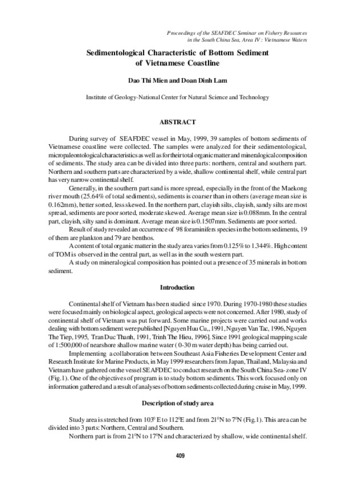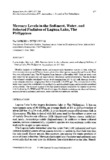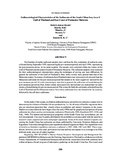| dc.contributor.author | Chareonpanich, Charumas | |
| dc.contributor.author | Seurungreong, Siriporn | |
| dc.contributor.author | Meksumpun, Shettapong | |
| dc.date.accessioned | 2019-01-17T04:21:17Z | |
| dc.date.available | 2019-01-17T04:21:17Z | |
| dc.date.issued | 1999 | |
| dc.identifier.citation | Chareonpanich, C., Seurungreong, S., & Meksumpun, S. (1999). Nutrient diagenesis in sediments of the South China Sea, Area II: Sabah, Sarawak, and Brunei Darussalam waters. In Proceedings of the Second Technical Seminar on Marine Fishery Resources Survey in the South China Sea, Area II: West Coast of Sabah, Sarawak and Brunei Darussalam, 14-15 December 1998, Kuala Lumpur, Malaysia (pp. 111-128). Samut Prakan, Thailand: Training Department, Southeast Asian Fisheries Development Center. | en |
| dc.identifier.uri | http://hdl.handle.net/20.500.12067/814 | |
| dc.description.abstract | Study on nutrient diagenesis and physico-chemical characteristics of bottom sediments of the Sabah, Sarawak and Brunei Darussalum waters had been carried out under the ongoing SEAFDEC Collaborative Research Project. The results indicated that organically enriched offshore sediments consisted high levels of pore water nitrate and phosphate concentrations. For the whole study area, the levels of nitrate and phopsphate concentrations in pore water were in the ranges of 0.05 to 77.12 ?g at NO3--N/L and 0.07 to 13.13 ?g at PO43--P/L, respectively. Upward diffusive fluxes of pore water nitrate widely changed in stations. At the nearshore area, the fluxes of pore water nitrate had an average of 26.5 mg at NO3--N/m2/d and were about one order of magnitude higher than those of phopsphate. However, phosphate upward fluxes were apparently high at deep areas off Sabah. Pore water ammonium concentrations were commonly very low but tended to be more accumulated at nearshore organically enriched areas. The ammonium concentrations for the whole study area ranged from non-detected level to 81.76 ?g at N/L. The nearshore stations showed very high upward fluxes of ammonium, which were nearly 10 times higher than those of nitrate and phosphate. Sedimentary organic levels were comparatively high in two distinct regions; (I) a shallow nearshore region of Sarawak, and (II) a deep offshore region of Sabah amd Brunei Darussalum. The sources of organic materials settled in Regions (I) and (II) were suggested to be derived from different origins. The Northeast monsoon can somewhat enhance organic accumulation in the nearshore region. Overall our results obtained from this study had been used to characterize the bottom sediments into three distinct regions and discussed for further fishery resource development and management. | en |
| dc.language.iso | en | en |
| dc.publisher | Training Department, Southeast Asian Fisheries Development Center | en |
| dc.subject | South China Sea | en |
| dc.subject | Malaysia | en |
| dc.subject | Sarawak | en |
| dc.subject | Sabah | en |
| dc.subject | Brunei Darussalam | en |
| dc.title | Nutrient Diagenesis in Sediments of the South China Sea, Area II: Sabah, Sarawak, and Brunei Darussalam Waters | en |
| dc.type | Conference paper | en |
| dc.citation.spage | 111 | |
| dc.citation.epage | 128 | |
| dc.subject.asfa | sediment chemistry | en |
| dc.subject.asfa | phosphates | en |
| dc.subject.asfa | nitrates | en |
| dc.subject.asfa | Sediment properties | en |
| dc.subject.asfa | biogeochemical cycle | en |
| dc.subject.asfa | fishery oceanography | en |
| dc.subject.asfa | Nutrients (mineral) | en |
| dc.subject.asfa | diagenesis | en |
| dc.citation.conferenceTitle | Proceedings of the Second Technical Seminar on Marine Fishery Resources Survey in the South China Sea, Area II: West Coast of Sabah, Sarawak and Brunei Darussalam, 14-15 December 1998, Kuala Lumpur, Malaysia | en |



